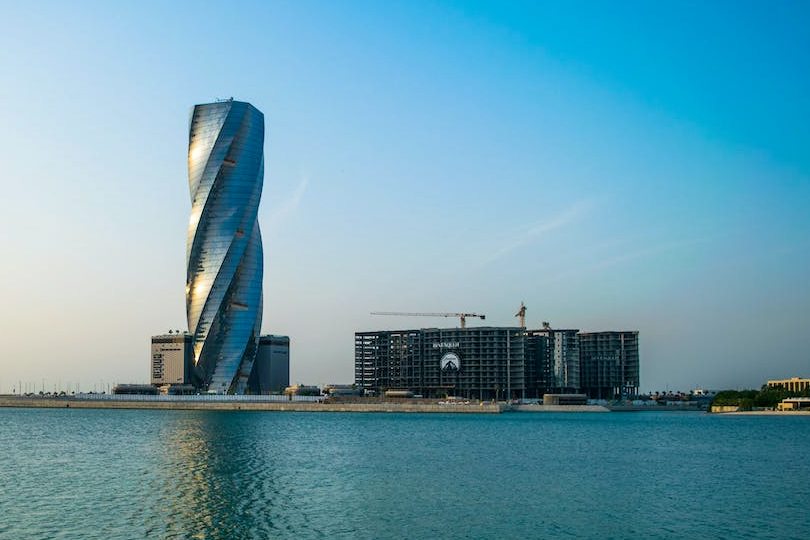
Are you looking to transfer your UK pension to Malaysia but need help figuring out how? Read on to discover your options and the risks and benefits of a pension transfer to an overseas scheme.
Your UK pension scheme information is all you need, then I can transfer it safely to the ideal scheme for you, handling all the following steps below.
Also consider: Read more about how to transfer your UK pension
Looking to transfer your UK pension?
Speak to me, Dan Ward, about transferring your UK pension funds to Malaysia.
Checklist for transferring a UK pension to Malaysia
- Collate existing UK pensions
- Request a CETV (Cash Equivalent Transfer Value)
- Conduct a cost and performance comparison
- Identify the best solution for Malaysia – I can help with this
- Submit transfer request documentation to the existing and new provider
Pensions Advice
Please note that if you have more than £30,000 in safeguarded benefits within a UK-registered pension scheme, you must, by law, consult a suitably licensed adviser before you can transfer your pension either within the UK or overseas. Without suitable advice, you could incur unnecessarily high fees and place your pension benefits at risk.
As it is likely one of your most significant assets, only entrust your retirement savings to a qualified, experienced adviser. UK advisers must be appropriately qualified and sufficiently knowledgeable about overseas tax regimes and pension rules to guide you safely but be aware that vanishingly few of them are.
The Financial Ombudsman Service does offer additional protections should you receive poor advice, whether you are a Malay national or a British expat.
As an international pension transfer specialist, I have years of experience worldwide and can help you make an informed, tax-efficient decision before you transfer your pension and any valuable guarantees it comes with.
Feel free to contact me for trustworthy, independent advice.
Can I move my UK pension to another country?
Transferring your UK workplace or private pension to a qualifying recognised overseas pension scheme or an international SIPP is usually possible when retiring in Malaysia.
Yet, you must take extra care with specific defined benefit schemes, which I will explain below, and in rare cases, you may be better off leaving your UK pension precisely as it is.
Before you can evaluate your transfer options, it is helpful to understand what precisely a UK pension scheme is and how to determine which you have.
Looking to transfer your UK pension?
Speak to me, Dan Ward, about transferring your UK pension funds to Malaysia.
Your UK-registered pension scheme
Most people who have lived or worked in the UK are likely to have one or more of the following pension schemes:
- Personal
- State
- Workplace
Aside from the state pension, for which you must make qualifying National Insurance contributions, every other type of UK-registered pension scheme is eligible for tax relief.
UK Tax Relief
The UK government provides tax advantages to incentivise retirement savings in two parts: first to your pension contributions and then to the investment growth of your pot.
However, apart from a tax-free lump sum at commencement, your pension income becomes taxable as soon as you begin receiving payment from it whilst a UK resident.
Your contributions are always eligible for tax relief at your marginal UK income tax rate, which is often automatic. Still, some higher-rate taxpayers will claim theirs via a self-assessment tax return.
Tax relief for pension savings always applies, whether you pay UK income tax or not. However, you will have a lower contribution limit if you are not working.
Understanding the Annual and Lifetime Allowances
Historically there were two limits to the amount you could contribute to your pension savings before triggering a punitive tax charge: a lifetime allowance and an annual allowance.
In the Spring Budget of 2023, the UK government scrapped the lifetime allowance of £1,073,100, but the opposition has promised to reinstate it should they win the 2024 general election. If your pension fund is approaching or has exceeded the former limit, it would be wise to keep this in mind, as it may affect which overseas pension scheme you choose for Malaysia.
The annual allowance is the total you may contribute in tax-relieved savings to your pension funds in any tax year from the 6th to the 5th of April.
For those earning £200,000 or lower, it is currently £60,000.
The limit is tapered down incrementally for higher earners, those not working, or if you have flexibly accessed your pension pot.
Personal Pensions
If you are, or were, self-employed in the UK, you will likely have a personal pension. Insurance companies, banks, building societies, or other providers typically offer these.
As described above, tax relief enhances your contributions, and the investment growth of your retirement savings is always free of capital gains tax.
You can take up to a quarter of your pot as tax-free cash, usually from ten years below your state retirement age unless you are severely ill.
Two of the most common such plans are stakeholder and self-invested personal pensions.
You can find out which you have by looking at the statement you receive every year, and this should also summarise how well your retirement funds are performing at investment and how much income you can expect.
Stakeholder
Stakeholder pensions adhere to a strict set of low-risk, low-cost guidelines governing charges, contributions, transfers and withdrawals. They are an extremely safe option as annual fees may be at most 1 to 1.5 per cent yearly.
However, investment choices are correspondingly constrained to a meagre range of funds. For this reason, many take advantage of the free transfer option by consolidating their pension funds into a self-invested personal pension, SIPP.
Self-Invested Personal Pension, SIPP
A SIPP can offer access to a broader range of funds and asset classes than any standard pension yet is subject to the same tax generosity on contributions and investment growth.
Further, converting your UK SIPP into an international product for retirement in Malaysia can be more straightforward than transferring your pension to other overseas schemes.
Watch out for higher charges when researching the best SIPP provider. It may not necessarily be in your best interests to use various extra features of a SIPP, such as by putting commercial property or exchange-traded funds into your pension.
You can always ask me if you have concerns about excessive fees for any offshore investments. I will help you find the most cost-efficient providers and negotiate the lowest possible charges.
It is worth noting that some SIPP providers will not work directly with members of the public, and only independent financial advisers can access their products.
UK State Pension
Check your eligibility for the UK state pension on the government’s pension forecasting website. Here you can also find out your state retirement age and how to make any additional National Insurance contributions – you need at least ten years to qualify, but these do not have to be consecutive years.
The UK state pension is not transferable to any overseas scheme or even within the UK, yet you can still access it via the direct payment method.
Contact the UK government’s International Pension Centre for more information.
Workplace Schemes
If you’ve ever had a UK employer, you will likely have a workplace pension plan. Because enrolment on such has been obligatory since 2012, if you’ve changed jobs a few times, it is easy to lose track of some pension savings. Use the UK government’s Pension Tracing Service to locate these, and you can always ask me to help you consolidate them into one international SIPP.
Occupational pension plans will be defined benefit, also known as ‘final salary’ schemes, or defined contribution schemes, sometimes called ‘money purchase plans’. If you don’t already know, you can find out which type you have by speaking with the pensions manager at work.
Defined Benefit
Defined benefit (DB) schemes are highly prized. They guarantee a proportion of your former salary, indexed up in line with inflation, which is not dependent on investment performance. Instead, the taxpayer or your employer funds your pension benefits. There are often additional safeguarded benefits, such as spousal or dependent pensions. You may have one with a private sector employer, but public sector employees most commonly hold them.
The Pension Protection Fund (PPF) provides a safety net for private employers becoming insolvent and will pay you up to 90% of your fund value in compensation. However, you must wait until you reach your state retirement age to claim this. If you have already reached this age and are receiving your pension when your employer goes bust or have retired on the grounds of ill health, you should continue to get 100% of the payments.
In all other scenarios, inflation protection with the PPF is a maximum of 2.5%, so with this in mind, in real terms, your retirement benefits may shrink to as little as 70% of the original.
Contact your UK pension scheme administrator if you have a DB pension before speaking with any financial advisers about transferring this type of UK pension overseas. A pension transfer to an overseas scheme is often possible but may not benefit you. Every other workplace plan will be a defined contribution (DC) scheme exposed to stock market volatility.
Defined Contribution
All private pensions and many occupational plans are DC schemes. Some older style schemes give you no option but to purchase an annuity, reducing the size of your pension fund in return for a guaranteed income. You may escape this when you transfer your pension to an overseas scheme such as an international SIPP.
The UK pension provider invests your contributions for you, and accrual, which determines how much money you receive in retirement, depends entirely on how hard they make those investments work.
There are a couple of exceptions to this. With group SIPPS and SSASs, alternative investment approaches and more flexible drawdowns are possible.
Group SIPP
A group SIPP is popular among certain professionals who want to invest together, such as vets, some lawyers or accountants. It allows participants to extend their purchasing power by clubbing together to invest in, for example, commercial real estate, which they can rent back to the business.
Your pot is held with the others but belongs to you, and you alone are responsible for the investments in it. As long as everyone shares the same provider, it is still a group SIPP.
Like all SIPPs, you can be as hands-on with the investments as you want, leave it entirely up to your stockbroker or financial adviser or cherry-pick from their advice.
Small Self-Administered Scheme
Company directors and senior executives of private firms can participate in a small self-administered scheme (SSAS). Including relatives, up to eleven people can use their pension funds to help grow the business by purchasing commercial premises for it or buying shares in it. An SSAS can also be used to take out loans to fund the property purchase.
How to choose an overseas pension scheme for Malaysia
There are two transfer options for accessing your pension overseas in Malaysia, plus a third way: to do nothing. Your UK pension provider may make payments to a bank account either offshore or in the UK. Then, you can simply withdraw it from ATMS in ringgits (MYR, sometimes RM is used) and run the gauntlet of fluctuating exchange rates as you go.
It is frequently in most people’s best interests to transfer to an international SIPP or a qualifying recognised overseas pension scheme (QROPS or ROPS). Both courses of action protect you from currency risk by allowing you to denominate a robust global currency relevant to the region where you live and spend. They each boast many other expat-friendly features, so how do you choose between overseas pension schemes?
Recognised overseas pension scheme
A qualifying recognised overseas pension scheme, QROPS or ROPS, is a way to transfer your British pension abroad to one of several global financial jurisdictions. Each QROPs scheme must comply with HMRC rules to be broadly similar to UK regulations governing withdrawals, contributions and taxes.
His Majesty’s Revenue and Customs (HMRC) website maintains a list of these overseas pension schemes. The list is updated twice monthly by HM Revenue, and you must personally check that any overseas scheme manager you are looking into is on there to protect yourself from scams and unauthorised payment charges.
No QROPS or ROPS are currently on the list for Malaysia, but you could weigh up pension transfers to a Malta-based QROPS instead. There will be an overseas transfer charge of a quarter of the transfer fund value as you will be resident outside the European Economic Area. There is no overseas transfer charge for those ordinarily resident in an EEA country or within the European Union. Ideally, you should base your QROPS in the same country or financial jurisdiction where you intend to live.
Pension transfers to a QROPS or ROPS are a benefit crystallisation event and, as such, can become quite complex and convoluted. Only attempt them with the guidance of an offshore pension specialist, or you could jeopardise your retirement income.
Additionally, there are tax implications you should go over carefully with an adviser, ensuring you have not been a UK tax resident for ten consecutive tax years (it used to be five consecutive tax years) before you begin withdrawing benefits from your QROPS.
International SIPP
International SIPPS share an identical structure with all UK SIPPs, and the Financial Conduct Authority (FCA) regulates them closely. Only providers governed by the FCA may offer international SIPPs.
Some of the many attractions they hold for internationally mobile people include, without limitation:
- No overseas transfer charge – your money remains in the UK, and you may move freely around the world
- Reduce currency risk – avoid costly fluctuations in exchange rates
- Flexible drawdown – choose how and when to receive retirement income
- Continue making contributions – grow wealth for your beneficiaries
- Utmost investment flexibility – access to diverse global opportunities.
- Tax-free pension commencement lump sum of up to 25% – provided you are a UK resident when you withdraw this
- Escape UK taxes – subject to residential status abroad
- Consolidate your pensions into one manageable fund
A pension transfer to an international SIPP can be vastly less complicated and costly than transferring to a QROPS scheme.
Living in the same country or jurisdiction is not required, making international SIPPs an excellent way to enjoy your UK pension overseas.
Also, should the lifetime allowance be reinstated, you do not have to pay tax if you breach the limit.
Tax on foreign pension income in Malaysia
A Double Taxation Agreement is currently in force between Malaysia and the UK to reduce the likelihood that you will have to pay tax twice.
Tax treatment of your British pension income is subject to your residential status. A successful application for a long-term residency permit can free you from UK and Malaysian income taxes.
Malaysia Retirement Visa
The Malaysia My Second Home (MM2H) programme allows non-Malaysians to reside in Malaysia and, crucially, makes your foreign pension income tax-free. This retirement visa is renewable every ten years, subject to your continued compliance with the program requirements.
You only need to apply for a permanent retirement visa under the MM2H scheme if you are not a Malay national. You can do so via the website of the Immigration Department of Malaysia, Ministry of Home Affairs, provided you satisfy the basic income requirement and comply with Malaysian laws.
You must ensure all documentation to support your application has been translated into English. For early retirees under the age of 50, there are additional needs to prove sufficient liquid assets.
If you would like help with the MM2H application process, you could consider enlisting the services of an immigration lawyer in Malaysia.
You can always ask me for any further help understanding how the residency and tax rules apply in your unique circumstances and to discuss how best to access your pension fund in Malaysia.
Looking to transfer your UK pension?
Speak to me, Dan Ward, about transferring your UK pension funds to Malaysia.
Please note
A pension is a long-term investment. The fund value may fluctuate and can go down, which would have an impact on the level of pension benefits available. Your pension income could also be affected by the interest rates at the time you take your benefits.
Overseas pension transfers can be complex. Make sure you take financial advice before you transfer your funds.
FAQs
Some of your most frequently asked questions about UK pension transfers overseas:
Can I transfer my pension internationally?
Most UK pensions are suitable for transfer to either a qualifying recognised overseas pensions scheme (QROPS or ROPS) or to an international SIPP. This can protect you from currency risk and be highly tax-efficient but should not be attempted without specialist advice.
In the case of some defined benefits schemes, you may have to demonstrate that you have sufficient alternative retirement income before the provider will agree to transfer your safeguarded benefits. Suppose you are barely over the £30k limit, whereby you are legally obliged to seek specialist advice and have no extra pension funds. In that case, it is unlikely to be cost-efficient to transfer to any other scheme, either in the UK or offshore.
Will I lose my UK pension if I move abroad?
What happens to my UK pension if I live abroad?




